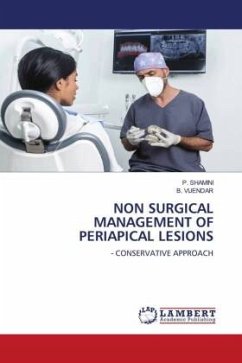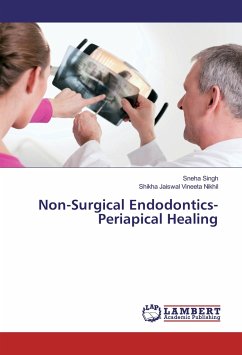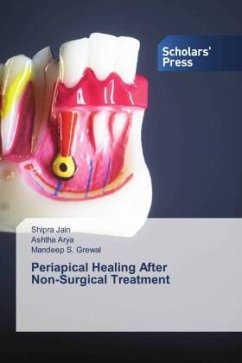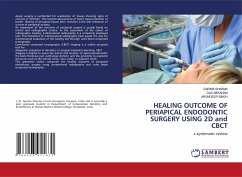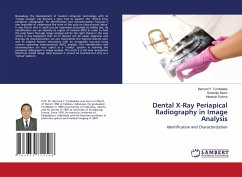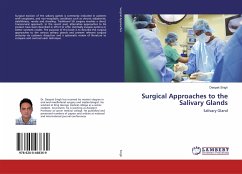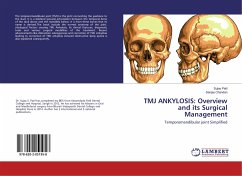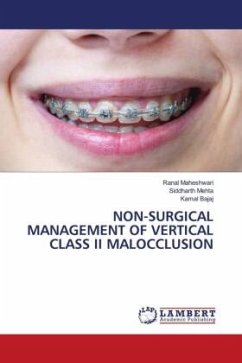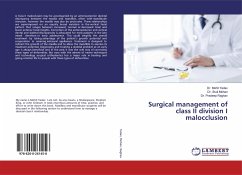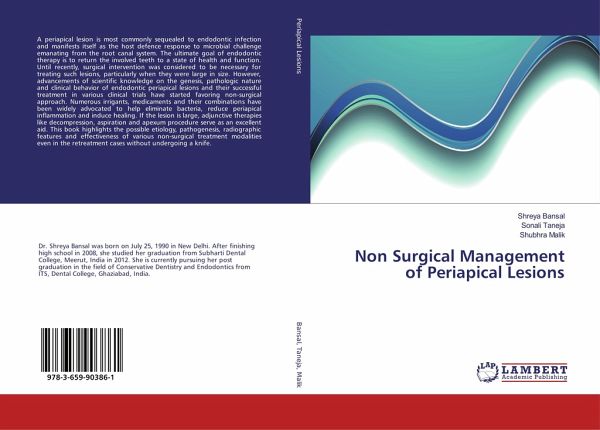
Non Surgical Management of Periapical Lesions
Versandkostenfrei!
Versandfertig in 1-2 Wochen
43,99 €
inkl. MwSt.

PAYBACK Punkte
22 °P sammeln!
A periapical lesion is most commonly sequealed to endodontic infection and manifests itself as the host defence response to microbial challenge emanating from the root canal system. The ultimate goal of endodontic therapy is to return the involved teeth to a state of health and function. Until recently, surgical intervention was considered to be necessary for treating such lesions, particularly when they were large in size. However, advancements of scientific knowledge on the genesis, pathologic nature and clinical behavior of endodontic periapical lesions and their successful treatment in var...
A periapical lesion is most commonly sequealed to endodontic infection and manifests itself as the host defence response to microbial challenge emanating from the root canal system. The ultimate goal of endodontic therapy is to return the involved teeth to a state of health and function. Until recently, surgical intervention was considered to be necessary for treating such lesions, particularly when they were large in size. However, advancements of scientific knowledge on the genesis, pathologic nature and clinical behavior of endodontic periapical lesions and their successful treatment in various clinical trials have started favoring non-surgical approach. Numerous irrigants, medicaments and their combinations have been widely advocated to help eliminate bacteria, reduce periapical inflammation and induce healing. If the lesion is large, adjunctive therapies like decompression, aspiration and apexum procedure serve as an excellent aid. This book highlights the possible etiology, pathogenesis, radiographic features and effectiveness of various non-surgical treatment modalities even in the retreatment cases without undergoing a knife.



